From the beginning, the National Electrical Code has included specific rules that are essential for protection of persons and property. Wiring and protection is covered more specifically in chapter 2 and is so titled. Article 250 provides the specific rules for grounding and bonding electrical systems and equipment. To understand how the grounding and bonding rules apply to electrical installations, one must establish a thorough knowledge of how grounding and bonding functions from a performance standpoint. In other words, what is intended to be accomplished when a rule requires grounding, and what must be accomplished when the Code requires bonding? (see figures 1 and 2).
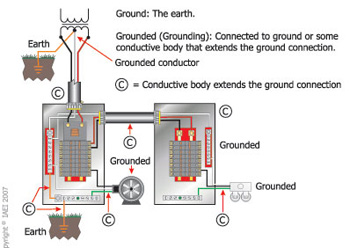
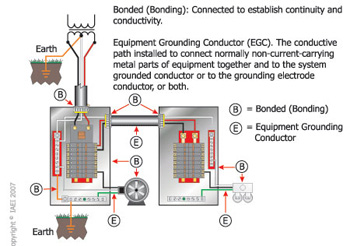
Figure 2. Bonding means connected together
Both grounding and bonding are fundamentally necessary for electrical safety. This article provides a look at extensive work completed over a period of approximately one year that resulted in significant improvements in understandability and usability in the NEC specifically related to grounding and bonding rules. It should be understood that as of this writing, the NEC Technical Committees have completed their work on all proposals and comments for the 2008 NEC, but this work could still be impacted by any appeals that may be filed in accordance with the NFPA Regulations Governing Committee Projects.
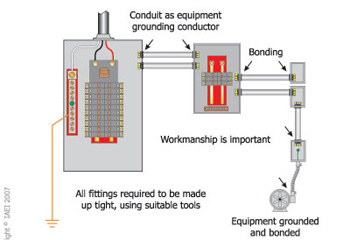
Figure 3. Purpose of the equipment grounding conductor is to ground equipment and provide an effective path for ground fault current.
Proposal 5-1 in the 2004 NEC Report on Proposals created quite a stir during the code development process in the 2005 NEC cycle. This proposal introduced a concept of changing the defined term equipment grounding conductor to the term equipment bonding conductor. This is where it all started. The substantiation with the proposal clearly identified some points that warranted serious consideration. As one can imagine, this proposal was met with a wide variety of reactions. Such a proposed change in the NEC flies in the face of tradition and faced skepticism and resistance. Many Code traditionalists saw this proposal as unnecessary and a change that would create confusion and unnecessary work in many other industry and product standards, which is definitely understandable. Others viewed this proposed change with optimism and an open-minded approach to the concepts, and realized the proposed revisions were technically correct in several ways. The challenges presented were similar to those that the industry faced when grounding and bonding rules were first developed. It was clear, based on the initial reaction of nineteen of the code-making panels, that the proposal had merit. Additionally, this proposal identified necessary revisions to defined grounding and bonding words and terms in Article 100. The proposal was ultimately rejected and the change never happened in the 2005 NEC; however, this proposal generated considerable interest and concern from the members of code-making panel 5, which is responsible for Articles 200, 250, 280, and 285. After much deliberation and discussion about this concept and some identified areas in need of improvement, it was determined that the chairman of CMP-5 would recommend to the NEC Technical Correlating Committee (TCC) that a special task group be assembled to explore all of the defined words and terms related to grounding and bonding and verify their accuracy and functionality, and to review their use in Article 250 and other rules throughout the entire Code. The recommendation was viewed favorably by the correlating committee resulting in a TCC assigned Task Group on Grounding and Bonding. A task group chair, who was also a representative of the TCC, was appointed to lead this group in achieving their established set of specific objectives. This provided an excellent conduit for continuous communication and observations by the TCC of the work and progress. The task group was then assembled including seven key members of CMP-5 along with several other key members of other NEC technical committees. There were also two members of the Technical Correlating Committee included in this working group which totaled 18 members.

Photo 1. Bonding through conduit or tubing fittings
The Task Ahead
The Technical Correlating Committee provided clear directives to explore several significant issues identified in Proposal 5-1 and Comment 5-1 in the 2005 NEC cycle regarding grounding and bonding terminology defined and used the Code. The following represents the scope of the assigned Task Group on Grounding and Bonding.
- To explore the issues identified by Proposal 5-1 and Comment 5-1 in the 2005 NEC cycle
- To consider developing proposals for the 2008 NEC to establish consistent use of the terms grounding and bonding as discussed in the identified proposals and comments during the 2005 NEC development process
- To consider other codes and standards, such as the Canadian Electrical Code (CE Code), Part I and International Electrotechnical Commission (IEC) 60364 in an effort to harmonize the definitions and use of the terms grounding and bonding
- To consider the inter-relationship of the NEC with product standards and the National Electrical Safety Code (NESC)
Common Understanding
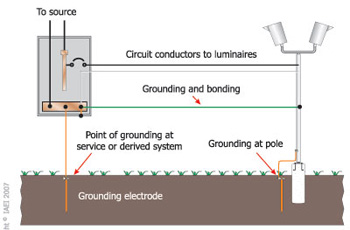
Figure 4. Equipment grounding conductors perform bonding and grounding functions.
Before the work could begin, it was important to get all members of the group on the same level of understanding. One of the most important tasks for this working group was to establish a clear and common understanding of all defined grounding and bonding words and terms. Another essential objective of this group was to review the performance requirements provided in 250.4. Section 250.4(A) and (B) provide the descriptive performance objectives of grounding and bonding. As the work began, it was clear that not all members in the group viewed grounding and bonding in the same fashion, and these members all carry extensive levels of Code experience. The result was a meaningful open dialog for all task group members to share ideas and benefit from each other’s input and experience. The first few months of work were necessary to establish this common understanding before any productive work could begin in achieving the established objectives of the assignment. Each member of the working group quickly realized that not everyone has the same understanding of grounding and bonding, which is also the case in the electrical industry as a whole. For this work to be productive and of benefit to the NEC, progressive thinking and being open to sharing all ideas became an eye-opening realization for the group.
Rules Using Defined Words and Terms

Table 1. Revised grounding and bonding defined words and terms
The definitions in the NEC assist users with proper application of the rules. The Code rules should mean what they imply by definition. When defined words and terms are not used consistently within the rules, it can lead to inconsistent and incorrect application of the requirements. With everyone in the group on the same page, the task of reviewing each of the defined grounding or bonding words and terms was underway. It was soon realized that some definitions needed revision, another was considered for deletion, and new ones were considered. Table 1 shows a a summary of the grounding or bonding words and terms that were affected by the work of this task group.
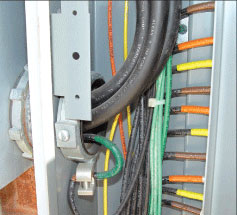
Photo 2. Bonding using equipment bonding jumpers
The work of the task group on these defined words and terms was primarily in an effort to reduce the definitions to their simplest form. As the work progressed, it was soon realized that many of these definitions were not accurate, and included performance requirements that were already contained in other performance requirements incorporated into 250.4. Keeping defined words and terms in a simple form helps assure that where these words or terms are used in Code rules, they will be accurate in meaning. In recent editions of the NEC, clear performance text was incorporated into Article 250 that explains the purpose of grounding and bonding. With this understanding, the task group realized that keeping the defined words and terms in their simplest form would be beneficial in the essential code-wide work that would follow. The following are the revised definitions of the grounding and bonding words or terms provided in table one.
Article 100 Definitions
Bonded (Bonding).Connected to establish electrical continuity and conductivity.
Ground. The earth.
Grounded (Grounding).Connected (connecting) to ground or to a conductive body that extends the ground connection.
Grounded, Effectively.Definition was deleted because the term is subjective and there are no specific parameters to use in making determinations as to whether or not an entity is effectively grounded. Instances where it was used in previous editions of the Code have been revised to remove the word “effectively” from the phrase. The term grounded, by definition, means connected to the earth. The direct connection to the earth through grounding electrodes is not always effective and varies based on geographical location or seasonal conditions and so forth. The word “effective” is used in the performance rules in Section 250.4 that relate to the effectiveness of the ground-fault current path necessary to facilitate overcurrent device operation, which is appropriate, measurable, and remains unchanged as a result of deleting the definition. The term effectively bonded, which was never defined, was also revised to remove the word “effectively” from the phrase. The performance criteria for bonding and what it is intended to accomplish is already provided in Section 250.4 and 250.90. There are conditions covered by the Code where bonding is required solely to minimize differences of potential between conductive parts such as for health care facilities, swimming pools and similar installations, agricultural buildings, and so forth. The definition of bonding has been revised to simplify its meaning as covered above.
Grounding Electrode.A conductive object through which a direct connection to earth is established.
Grounding Electrode Conductor.The conductor used to connect the grounding electrode(s) to a system conductor or to equipment.
Grounding Conductor, Equipment (EGC).The conductive path installed to connect normally non-current-carrying parts of equipment together, and to the system grounded conductor or to the grounding electrode conductor, or both.
FPN No. 1: It is recognized that the equipment grounding conductor also performs bonding.
FPN No. 2: See 250.118 for a list of acceptable equipment grounding conductors.
Ungrounded.Not connected to ground or to a conductive body that extends the ground connection.
Section 250.2 Definition
Ground Fault.An unintentional, electrically conducting connection between a normally current-carrying conductor of an electrical circuit and the normally non–current-carrying conductors, metallic enclosures, metallic raceways, metallic equipment, or earth.
FPN: Unintentional grounding connections to the grounded conductors on the load side of the service disconnecting means or the load side of a separately derived system, creates one type of ground fault condition addressed in the definition of ground fault.
Responsibilities for Definitions

Photo 3. Connection to ground through a grounding electrode conductor
Sometimes timing is everything. The 2008 NEC development process included a shift in responsibility for any technical definitions that fall under the scope of responsibility of certain NEC technical committees. Traditionally, all of the definitions in Article 100 were the responsibility of code-making panel 1. Action by the NEC Technical Correlating Committee (TCC) results in each code-making panel being responsible for definitions of words and terms that are under their responsibility, but these definitions will continue to be located in Article 100. Definitions that are general in nature will continue to be assigned to code-making panel 1. As a result, CMP-5 was responsible for reviewing and acting on all proposals to revise definitions of grounding and bonding words and terms. The panel acted favorably to all definition revisions that resulted from the work of the task group.
Code-Wide Improvements

Table 2. Summary of proposals submitted by the task group
The work of TCC Grounding and Bonding Task Group also included a global NEC review and analysis to address how each of the grounding or bonding words or terms were used in Article 250 and submit proposals for necessary revisions as required. The task group had the responsibility to specifically address how each word or term was currently being used throughout the rest of the rules in the Code. Where revisions were necessary, the task group developed and submitted proposals to each NEC Technical Committee. In many cases, revisions were made to include more specific direction and prescriptive language for users that clarifies what is meant by a rule that includes the words “shall be grounded.” The accepted changes in this instance resulted in changing the term shall be grounded to shall be connected to an equipment grounded conductor where that was the original intention of the requirement. This resulted in better Code that is not subjective and is understood and enforceable. The Grounding and Bonding Task Group developed 28 proposals for the 2008 NEC as provided in table 2.
Each of the code-making panels acted favorably to the proposals resulting from the efforts of the task group; however, not all of the proposals were accepted without some modification. There were some instances where each technical committee had to accept in principle the proposed revision and make slight adjustments necessary for specific functionality. The efforts to make such extensive code-wide revisions involved all of the NEC technical committees embracing the concepts and efforts put forth by the Task Group on Grounding and Bonding.
Summary

Photo 4. Ungrounded portable generator
People are generally resistant to change, which is human nature. Breaking tradition is more difficult for some than others. Sometimes change is necessary and meaningful. In the electrical code-making process, change is continuous because of the inherent dynamics of the NEC. Changes should never be made just for the sake of change; there must be purpose (reason), an objective (goal), and a positive result (good code). Good code is code that is understandable, practical, and enforceable. The 2008 Code has experienced a series of changes related to grounding and bonding definitions and rules. The concepts and objectives of these revised definitions and rules are retained, clarified, and improved as a result of extensive work by an assigned group of many dedicated professionals to achieve these objectives. See IAEI’s book, Analysis of Changes 2008 NEC for additional information about these and many other significant changes ultimately incorporated into this new edition of the Code.












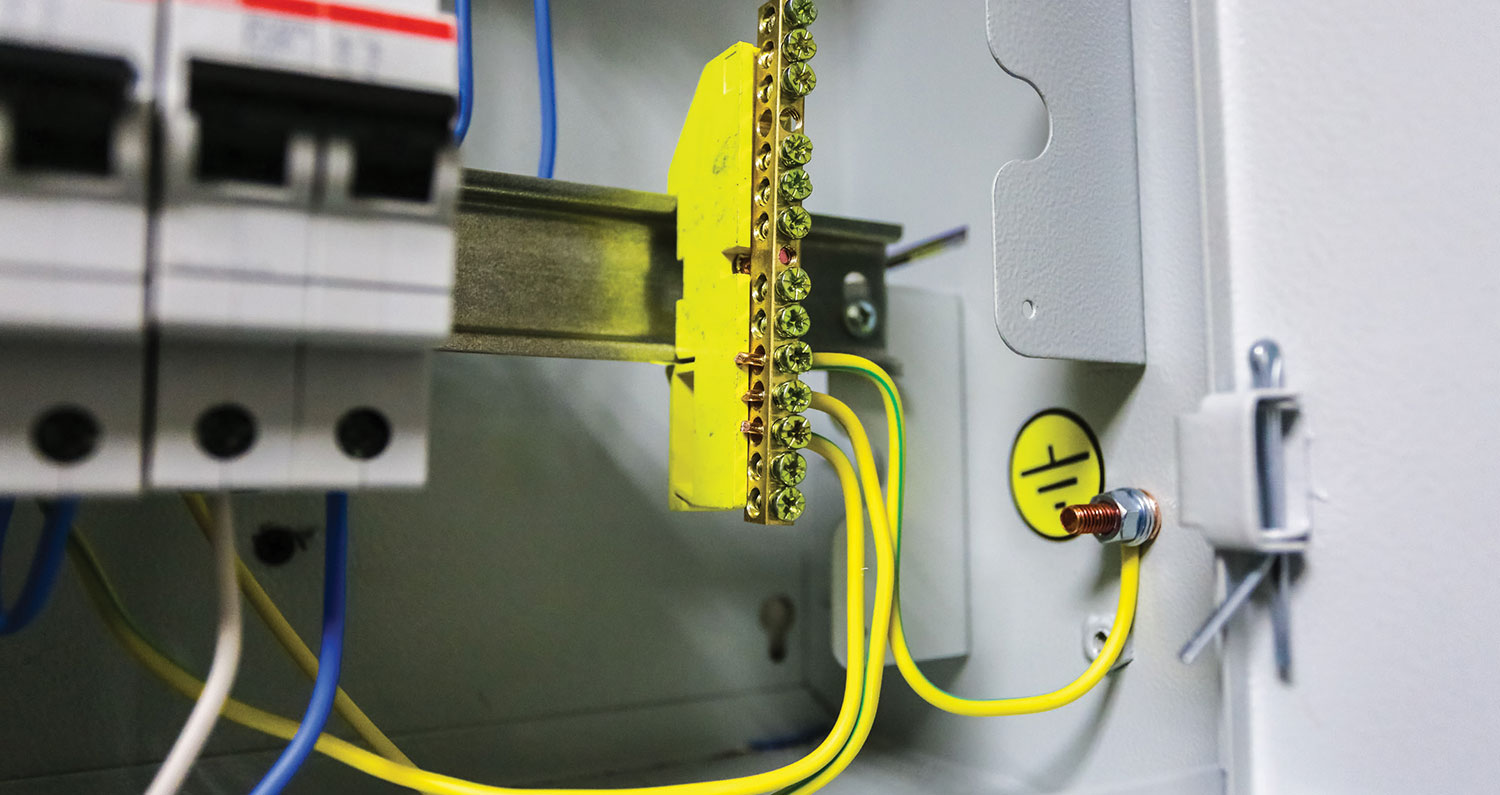
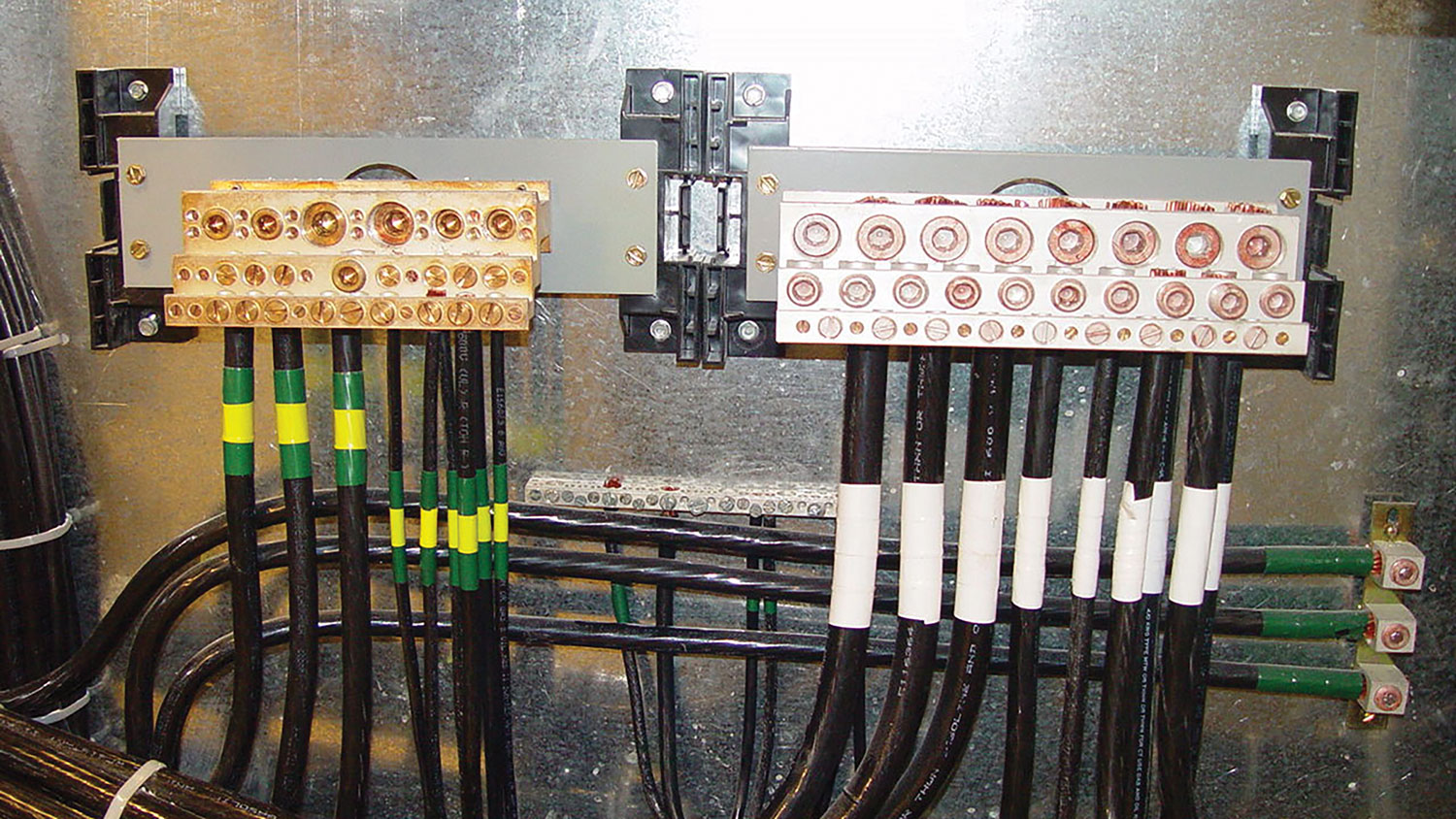
Find Us on Socials